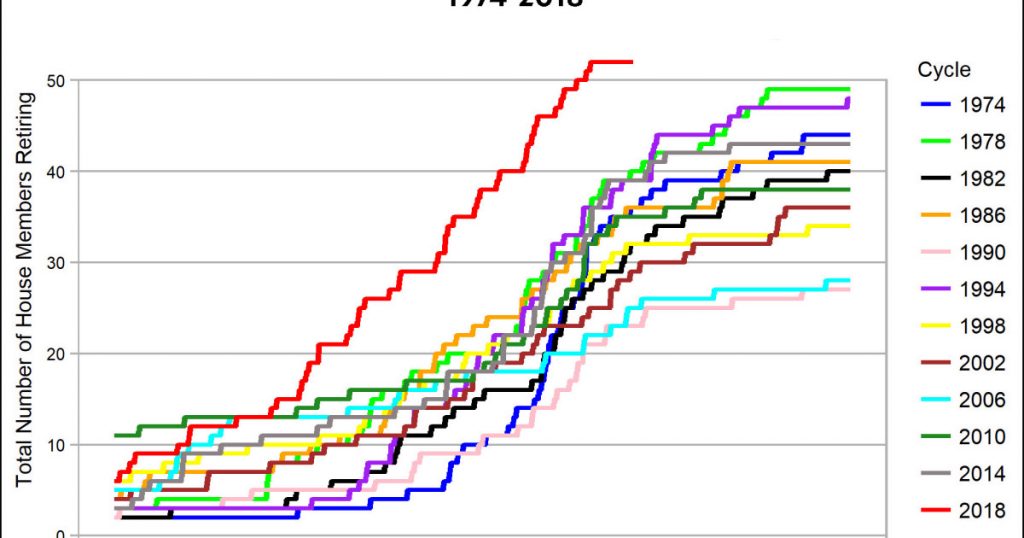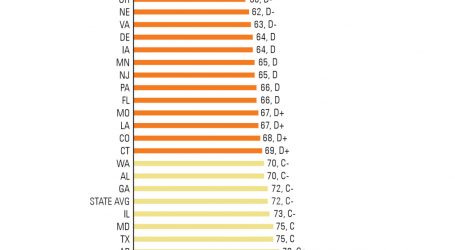Charts of the Day: Here’s Why Republicans Are Terrified About the 2018 Midterms
Looking for news you can trust?Subscribe to our free newsletters.
Here’s a couple of fun charts to finish off the evening. They’re from Geoffrey Skelley of Sabato’s Crystal Ball, and they show how many members of Congress have retired in previous midterm election cycles. First up is total retirements over time, starting at 600 days before the election and going through 75 days before the election:
As you can see, 2018 is already a huge outlier. At 300 days before the election, 52 House members had announced their retirement, breaking the all-time record held by 1978 with months still left to go. And a record number of them are from the president’s party:
There have already been 36 retirements by Republican House members, well above the previous record. This is, obviously, good news for Democrats on two fronts. First, it demonstrates a general fear among Republicans that 2018 is going to be a landslide defeat, prompting lots of them to simply give up. Second, it opens up a lot of Republican seats, making a landslide defeat even more likely. It’s a vicious circle. And that circle gets even worse when you consider the flip side: Democrats can smell the fear, and that means far more high-quality candidates are running in districts that previously had a hard time attracting people to spend time on what seemed like a hopeless cause.
And then it gets even worse, because it’s not just Congress at risk for Republicans. As Joan Walsh writes today, there’s also a huge surge of Democrats running for seats at the state level:
As we head into the first national elections since Trump’s inauguration, Democrats are talking less about “the Trump effect” than they are about “the Virginia effect”—the unprecedented surge of women, minority, and millennial candidates running for seats in their state legislatures, many in deep-red districts long written off by the Democratic Party establishment. These candidates have been buoyed by a raft of outside and resistance groups, including Indivisible, Emily’s List, Run for Something, Forward Majority, Sister District, and BlackPAC, among many others. But party leaders have also taken note of this wave and are finally beginning to invest meaningfully and systematically in local candidates.
What does it take to get young people to vote? That’s the eternal question for Democrats. But the answer might be: getting young people to run. And it doesn’t hurt to have a racist, sexist, boorish pig¹ as the leader of the opposition, does it?
¹Who, by the way, might get us all killed if he happens to get mad at something he sees on Fox & Friends some morning.





